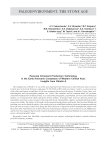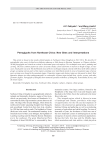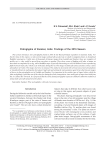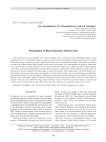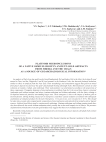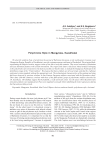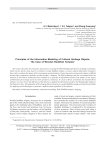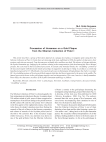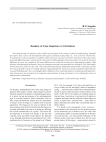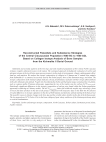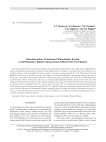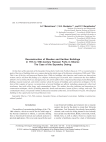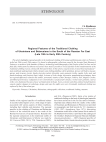Статьи журнала - Archaeology, Ethnology & Anthropology of Eurasia
Все статьи: 351
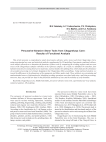
Percussive-abrasive stone tools from Chagyrskaya cave: results of functional analysis
Статья научная
This article presents a comprehensive study of percussive-abrasive active stone tools from Chagyrskaya Cave, using experimental use-wear and statistical methods, supplemented by 3D-modeling. Experiments combined with use- wear analysis allowed us to determine the functions of these tools by comparing the working surfaces and use-wear traces in the Chagyrskaya samples with those in the reference samples. As a result, we identified 19 retouchers, four hammerstones for processing mineral raw materials, and one hammer for splitting bone, which indicates the dominance of secondary processing over primary knapping in the Chagyrskaya lithic assemblage. Using statistical analysis, we traced the differences in the dimensions of the manuports and lithics under study. These artifacts are a promising and underestimated source of information for identifying working operations associated with stone- and bone-processing; moreover, they can provide new data on the functional attribution of sites and the mobility of early hominins.
Бесплатно
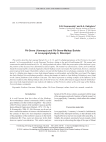
Pit-grave (Yamnaya) and pit-grave-maikop burials at Levoyegorlyksky-3, Stavropol
Статья обзорная
Бесплатно
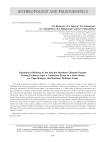
Статья научная
This study reconstructs biological affinities in a cranial sample from a collective burial on Cape Bratyev in Babushkin Bay. The burial, found in a rock niche on the Okhotsk Coast, was excavated by S.P. Efimov in 1976 and tentatively attributed to the Old Koryak culture. The sample consists of 13 adult skulls of differing preservation—five male, five female, and three undeterminable. Genome-wide analysis was carried out at the Center for Geogenetics of the University of Copenhagen. Paleogenetic data support the archaeological hypothesis attributing the burial to the Old Koryak culture. The results of the craniometric analysis suggest that the Old Koryak population was heterogeneous. Cranial data indicate population contacts between ancient Koryaks and the Epi-Jōmon people of Hokkaido. Also, they reveal common episodes in the population history of the group from Cape Bratyev and the Okhotsk culture people. Two of the three Okhotsk samples used for comparative analysis demonstrate very close affinities with individuals studied. According to the previous studies and our current analysis, the Okhotsk people resulted from the admixture of ancient groups related to Chukchi and Eskimo, on the one hand, and Tungus-Manchu groups, on the other. A significant difference between the Old Koryak population and that of Okhotsk culture is that the former includes a component related to Nivkhs.
Бесплатно
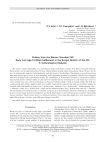
Статья научная
This article outlines the findings of a technological study of the Kulai ceramics from Barsov Gorodok III/6 near Barsova Gora, on the right bank of the Ob River, Tyumen Region, Khanty-Mansi Autonomous Okrug. We describe the site, its stratigraphic sequence and planigraphy, and the layout of the dwellings. The analysis was performed using binocular microscopy of traces in fresh transverse and longitudinal fractures of potsherds. Results were compared with those relating to the experimental sample. The examination of 50 specimens revealed a conservative tradition typical of the potters’ substrate skills. Its characteristics included the use of homogeneous clay mined near reservoirs in one and the same area, and the technology was based on bottom-to-body or body-to-bottom coiling. The body was constructed by side coiling. Adaptive skills were variable. Four mixed recipes for clay paste are described, making up one-fifth of the total number of recipes: clay + broken stone + chamotte; clay + broken stone + liquid organics; clay + + chamotte + sand; clay + broken stone + sand; and two unmixed recipes: clay + broken stone; and clay + chamotte. The mechanical processing of surface is variable, being based on 16 techniques and their combinations. Techniques used at various stages of pottery manufacture are listed. Simple paste recipes indicate groups of potters representing various traditions. Mixed recipes attest to a blend of traditions. Those using them might have been monocultural or multicultural groups of potters using different techniques and skills.
Бесплатно
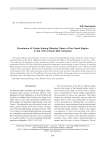
Prevalence of caries among Siberian Tatars of the Omsk region in the 17th to early 20th centuries
Статья обзорная
Бесплатно
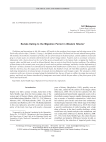
Prospection studies of Bohai graves near Kraskinskoye fortified settlement, Primorsky krai
Статья
Бесплатно
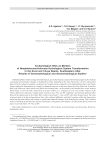
Remain s of tapestry from a Xiongnu (early 1st century ad) burial in mound 22 at Noin-Ula
Статья обзорная
Бесплатно

